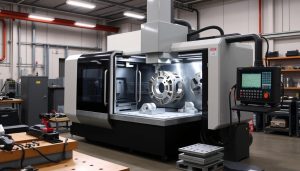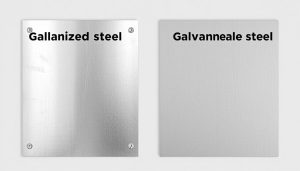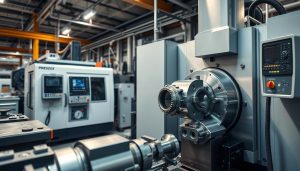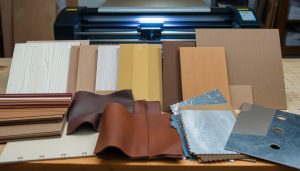In the world of metal fabrication and construction, Metal Inert Gas (MIG) welding has emerged as a game-changer. This versatile welding technique has revolutionized the way we approach joining metals, offering a seamless and efficient solution for a wide range of projects. From the automotive industry to home DIY projects, MIG welding has become an essential skill for professionals and hobbyists alike.
This comprehensive guide delves into the intricacies of MIG welding, providing you with a thorough understanding of the process, its various types, and the numerous benefits it offers. Whether you’re a seasoned welder or just starting your journey, this article will equip you with the knowledge and insights to master the art of MIG welding and tackle your next metalworking project with confidence.
What is MIG Welding?
MIG welding, also known as Gas Metal Arc Welding (GMAW), is a popular and versatile welding process used across various industries. This wire-feed welding technique involves the use of a continuously fed consumable wire electrode that is melted by an electric arc, forming a strong, high-quality weld.
Definition of MIG Welding
MIG welding, or GMAW, is a semi-automatic or automatic arc welding process in which a solid wire electrode is fed through a welding gun and into the weld pool, shielded by a gas mixture. The electric arc formed between the continuously fed wire electrode and the workpiece melts the metal, allowing them to fuse together.
How MIG Welding Works: The Basics Explained
At the heart of a MIG welder is a wire-feed system that automatically delivers the consumable wire electrode to the welding arc. The wire is fed through a welding gun, which also carries the shielding gas – typically a mixture of argon and carbon dioxide – to protect the weld area from atmospheric contamination. An electric power source provides the current that creates the welding arc, melting the wire and the base metal to form the weld.
The basic steps of the Gas Metal Arc Welding (GMAW) process are as follows:
- The wire electrode is fed through the welding gun and into the weld pool.
- The electric arc forms between the wire and the workpiece, melting both the wire and the base metal.
- The shielding gas, such as argon or a mixture of argon and carbon dioxide, flows around the arc to protect the weld from atmospheric contamination.
- The molten metal from the wire and the base material fuse together, forming a strong, high-quality weld.
The combination of the wire-feed system, shielding gas, and electric arc power source makes MIG welding a versatile and efficient welding process for a wide range of metal fabrication and repair applications.
Types of MIG Welding
When it comes to MIG welding, there are several distinct techniques that offer unique advantages and applications. Let’s delve into the three primary types of MIG welding: short circuit, spray transfer, and pulsed MIG welding.
Short Circuit MIG Welding
Short circuit MIG welding is the most common and versatile of the MIG welding techniques. It utilizes a low-voltage, high-current electric arc to melt the filler metal, resulting in a weld bead with excellent control and minimal spatter. This method is ideal for welding thin materials, as it produces a narrow, concentrated heat-affected zone, making it well-suited for delicate or precision work.
Spray Transfer MIG Welding
Spray transfer MIG welding employs a high-voltage, low-current electric arc to create a fine, atomized spray of molten metal that is deposited onto the workpiece. This technique produces a wide, smooth weld bead and is commonly used for welding thicker materials, as it can penetrate deeper into the base metal. Spray transfer MIG welding is often preferred for applications requiring high-quality, cosmetic welds.
Pulsed MIG Welding
Pulsed MIG welding is a hybrid technique that combines the advantages of both short circuit and spray transfer MIG welding. It utilizes a pulsing current that alternates between low and high levels, allowing for greater control over the weld pool and heat input. Pulsed MIG welding is particularly useful for welding materials of varying thicknesses, as it can accommodate both thin and thick sections without compromising weld quality.
| MIG Welding Technique | Voltage and Current | Advantages | Ideal Applications |
|---|---|---|---|
| Short Circuit | Low voltage, high current | Excellent control, minimal spatter | Welding thin materials, precision work |
| Spray Transfer | High voltage, low current | Smooth, high-quality weld bead | Welding thicker materials, cosmetic welds |
| Pulsed | Alternating low and high current | Versatile, accommodates varying thicknesses | Welding materials of different thicknesses |
Understanding the nuances of these MIG welding techniques is crucial for selecting the right approach for your specific project requirements, ensuring optimal results and efficiency.
Benefits of MIG Welding
MIG welding, also known as Metal Inert Gas welding, is a versatile and efficient welding process that offers numerous advantages for various projects. From its speed and ease of use to its suitability for a wide range of metal thicknesses, MIG welding has solidified its place as a go-to choice for professional welders and DIY enthusiasts alike.
Advantages in Speed and Efficiency
One of the primary benefits of MIG welding is its remarkable speed and efficiency. Compared to other welding methods, MIG welding allows for faster weld times, making it an ideal choice for high-production environments or projects that require quick turnaround. The continuous wire feed and automated process help to streamline the welding operation, increasing productivity and reducing overall project timelines.
Suitability for Thin and Thick Metals
MIG welding is a versatile welding process that can handle a wide range of metal thicknesses, from thin sheets to thick plates. This flexibility makes it suitable for a diverse array of applications, from automotive manufacturing to construction and fabrication. Whether you’re working with delicate materials or robust industrial components, MIG welding can deliver consistent, high-quality results.
Cost-Effectiveness of MIG Welding
In addition to its speed and versatility, MIG welding is also known for its cost-effectiveness. The relatively low setup and operating costs, combined with its efficiency, make MIG welding an economical choice for businesses and individuals alike. This MIG welding advantages make it a popular option for projects where budgets and timelines are a concern.
| Characteristic | Benefit |
|---|---|
| Speed and Efficiency | Faster weld times, increased productivity, and reduced project timelines |
| Versatility | Suitable for a wide range of metal thicknesses, from thin sheets to thick plates |
| Cost-Effectiveness | Low setup and operating costs, making it an economical choice for various projects |

“MIG welding is a game-changer in the world of metal fabrication, offering unparalleled speed, versatility, and cost-effectiveness that make it an indispensable tool for professionals and DIY enthusiasts alike.”
MIG Welding Process Explained
Mastering the MIG welding process is essential for anyone looking to work with metal fabrication. From preparing the necessary tools and equipment to executing the welding steps safely, this comprehensive guide will walk you through the entire MIG welding journey.
Preparing for MIG Welding: Tools and Equipment
The foundation of successful MIG welding lies in having the right tools and equipment. At a minimum, you’ll need a MIG welding machine, a welding gun, a wire feeder, and shielding gas. Choosing the appropriate size and type of these components for your project is crucial to achieve optimal results.
Step-by-Step Guide to MIG Welding
- Set up your MIG welding machine and connect the required components.
- Adjust the welding parameters, such as wire feed speed and voltage, based on the thickness of the metal you’re working with.
- Prepare the workpiece by cleaning the surface and removing any paint or rust.
- Position the workpiece and secure it in place to ensure a stable joint.
- Strike an arc and guide the welding gun along the joint, maintaining a consistent travel speed and angle.
- Monitor the weld pool and make any necessary adjustments to the welding parameters.
- Allow the welded area to cool down before handling the workpiece.
Safety Tips for MIG Welding
- Wear appropriate personal protective equipment (PPE), including a welding helmet, gloves, and fireproof clothing.
- Ensure proper ventilation in the work area to minimize exposure to welding fumes.
- Securely clamp the workpiece to prevent unintended movement during welding.
- Keep a fire extinguisher nearby and be aware of your surroundings to prevent potential hazards.
- Follow the manufacturer’s instructions for the safe operation of your MIG welding equipment.
By understanding the MIG welding process, from preparation to execution, and prioritizing safety, you’ll be well on your way to mastering this versatile and efficient welding technique.

Applications of MIG Welding
MIG welding, or Metal Inert Gas welding, has a wide range of applications across various industries. From the assembly lines of automotive manufacturing to the fabrication of complex industrial structures, this versatile welding technique has become an essential tool for professionals and DIY enthusiasts alike.
MIG Welding in Automotive Manufacturing
In the automotive industry, MIG welding is extensively used for body panel welding and chassis fabrication. Its ability to weld thin and thick metals with precision and speed makes it the preferred choice for joining vehicle components, ensuring the structural integrity and safety of the final product.
Common Industrial Applications of MIG Welding
- Shipbuilding: MIG welding is crucial for the construction and repair of ships, from the hulls to the superstructure.
- Construction: MIG welding is used in the fabrication of steel frames, railings, and various structural elements in construction projects.
- Aerospace: MIG welding plays a vital role in the assembly of aircraft components, including airframes and engine mounts.
- Machinery and Equipment Manufacturing: MIG welding is employed in the production of industrial machinery, tools, and equipment.
MIG Welding for DIY Projects and Home Repairs
Beyond industrial applications, MIG welding has also become a popular choice for DIY enthusiasts and homeowners. From fabricating custom furniture and repairing metal garden tools to reinforcing metal structures in the home, MIG welding provides a cost-effective and versatile solution for a wide range of DIY projects and home repairs.
| Industry | MIG Welding Applications |
|---|---|
| Automotive | Body panel welding, chassis fabrication |
| Shipbuilding | Hull construction, superstructure fabrication |
| Construction | Steel frame assembly, railing fabrication |
| Aerospace | Airframe assembly, engine mount fabrication |
| DIY and Home Repairs | Custom furniture, tool and equipment repair |
From the assembly lines of the automotive industry to the custom workshops of DIY enthusiasts, MIG welding has proven to be a versatile and indispensable tool for a wide range of industrial welding applications and MIG welding uses.
Challenges and Limitations of MIG Welding
While MIG welding offers numerous benefits, it’s important to be aware of the challenges and limitations associated with this welding technique. Understanding these potential obstacles can help welders make informed decisions and take the necessary precautions to ensure successful MIG welding projects.
Issues with Joint Penetration and Heat Control
One of the primary challenges in MIG welding is achieving the right level of joint penetration. Insufficient penetration can lead to weak joints, while excessive penetration can cause burn-through, compromising the structural integrity of the final product. Welders must carefully control the heat input to strike the right balance and ensure consistent, high-quality welds.
Troubleshooting MIG Welding Problems
MIG welding is not without its fair share of problems. Common issues like porosity, spatter, and burn-through can arise, affecting the overall quality and appearance of the weld. Proactive troubleshooting is essential to identify and address these challenges. Welders must be equipped with the knowledge and skills to diagnose and rectify MIG welding problems efficiently.
| MIG Welding Challenge | Potential Causes | Troubleshooting Tips |
|---|---|---|
| Porosity | – Contaminated base metal or filler wire – Improper shielding gas flow – Welding in windy conditions |
– Clean the base metal thoroughly – Ensure proper shielding gas flow and coverage – Weld in a sheltered area or use wind protection |
| Spatter | – Incorrect welding current or voltage – Improper wire feed speed – Dirty or worn contact tip |
– Adjust welding parameters to reduce spatter – Optimize wire feed speed – Replace the contact tip if necessary |
| Burn-through | – Excessive heat input – Thin base metal thickness – Incorrect welding technique |
– Reduce welding current or travel speed – Use a smaller diameter wire or lower voltage – Adjust welding technique to control heat input |
By understanding the common MIG welding challenges and applying effective welding troubleshooting techniques, welders can overcome these obstacles and deliver high-quality, reliable welds.
Choosing MIG Welding for Your Project
When it comes to metal fabrication, MIG welding can be an excellent choice for a variety of projects. But how do you know if MIG welding is the right fit for your needs? Let’s explore the factors to consider when selecting MIG welding for your next project.
How to Know if MIG Welding is Right for You
MIG welding is known for its versatility, speed, and ease of use, making it a popular choice across many industries. If you’re working with thin to medium-thick metals, MIG welding can be a highly efficient and cost-effective solution. It’s also well-suited for welding in multiple positions, from flat to vertical, making it a flexible option for a wide range of applications.
Factors to Consider When Using MIG Welding
When deciding if MIG welding is the best approach for your project, consider factors such as the metal thickness, joint design, accessibility, and the desired weld quality. MIG welding performs exceptionally well on steel, stainless steel, and aluminum, but may not be the optimal choice for certain alloys or situations where deep penetration is required.
Why Choose Shixinproto for MIG Welding Projects?
If you’ve determined that MIG welding is the right fit for your project, Shixinproto can provide the expert services and high-quality results you need. With years of experience in metal fabrication, our team has the skills and knowledge to deliver precise, reliable MIG welding solutions tailored to your specific requirements. Trust Shixinproto to handle your MIG welding projects with the professionalism and attention to detail that you deserve.
FAQ
What is MIG Welding?
How does MIG Welding work?
What are the different types of MIG Welding?
- Short Circuit MIG Welding: Suitable for welding thin materials with low heat input and minimal distortion.
- Spray Transfer MIG Welding: Ideal for welding thicker materials, producing smooth, spatter-free welds.
- Pulsed MIG Welding: Uses pulsed welding current to control heat input and achieve high-quality welds.
What are the benefits of MIG Welding?
- Speed and Efficiency: Ideal for high-volume production.
- Versatility: Works on a wide range of metal types and thicknesses.
- Cost-Effectiveness: Generally more economical for many applications compared to other welding methods.
How do I prepare for and perform MIG Welding?
- Proper tools and equipment, including a MIG welder, wire feeder, and shielding gas.
- Set up the equipment, adjust wire feed and gas flow, and execute the weld following a step-by-step process.
- Adhere to safety measures, such as wearing personal protective equipment (PPE) and ensuring proper ventilation.
What are the common applications of MIG Welding?
- Automotive manufacturing: Body panels, chassis, and assembly.
- Industrial fabrication: Shipbuilding, construction, and aerospace projects.
- DIY projects and home repairs: Metal furniture, fencing, and household appliances.
What are the challenges and limitations of MIG Welding?
- Joint penetration and heat control can be challenging for specific applications.
- Outdoor use may be difficult as shielding gas can be disrupted by wind.
- Common issues like porosity, spatter, and burn-through require troubleshooting.
How do I know if MIG Welding is the right choice for my project?
- Metal thickness and type required for welding.
- Welding speed and productivity needs.
- Your budget and the cost-effectiveness of MIG welding versus other methods.
If MIG welding is the best fit, Shixinproto offers expert guidance and high-quality MIG welding services to ensure the success of your project.





